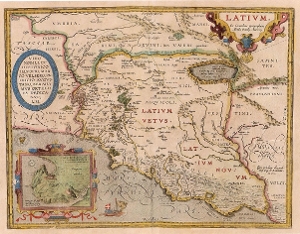Research project
An empire of 2000 cities: urban networks and economic integration in the Roman Empire
The central aims of this project are to establish the shapes of the various urban hierarchies existing in the provinces of the Roman Empire and (especially) to use the quantitative properties of these hierarchies to shed new light on levels of economic integration.
- Duration
- 2013 - 2018
- Contact
- Luuk de Ligt
- Funding
-
 ERC
ERC

How many cities were there actually in the Roman Empire? And why did some regions only have a few cities, while others consisted of a tight urban network? Strangely enough we do not know how many cities there were in the Roman Empire. In the first phase of the project, the researchers are gathering all known data on the size and functions of the cities of the Roman world. Another important goal of the project is to throw light on the question of why the urban network, or rather, the urban networks of the Roman world looked the way they did. How can we explain the sometimes remarkable differences between areas with large cities and other areas with a tight network of small towns?
The central aims of this project are to establish the shapes of the various urban hierarchies existing in the provinces of the Roman Empire and (especially) to use the quantitative properties of these hierarchies to shed new light on levels of economic integration. Should we conceptualize the urban system of the Roman world as a collection of cellular modules which were only loosely connected by the imposition of a rudimentary administrative superstructure and by resource flows of limited significance? Or did the creation of an overarching empire favour the emergence of an economically well-integrated urban network or at least the growth of certain nodal points which helped to tie the empire together by mediating resource flows between regions? Key topics to be explored include the physical size of cities, the overall shape of regional urban hierarchies, the role of harbour cities in connecting various parts of the empire, and the economic implications of the emergence and existence of large provincial capitals and other primate cities.
Building on spatial and economic theories from various disciplines, the project starts from the working hypothesis that the urban system of the Roman empire possessed a number of unique features which set it apart from that of the various urban system existing in the same geographical area during the early-modern period. While some of these features (such as the size of Rome) can plausibly be attributed to the fact that the Roman empire was much larger than the empires and emerging nation states of early-modern times, the project aims to demonstrate that the specific configuration of regional urban hierarchies in the Roman world also reflects levels of economic integration which fell dramatically short of those achieved in various parts of early-modern Europe.
Related research
-
An empire of 2000 cities: urban networks and economic integration in the Roman Empire
- The urban system in the North Western provinces
- Cities of the Roman Near East
- Urbanism and municipal administration in Roman North Africa
- Civitates Hispaniae: urbanization on the Iberian Peninsula during the Roman Empire
- Cities of Roman Asia Minor
- Urbanism in the Roman frontier provinces Germania Superior, Raetia and Noricum
- The Roman urban network in the Balkan and the Danube provinces
